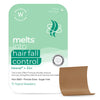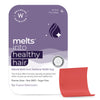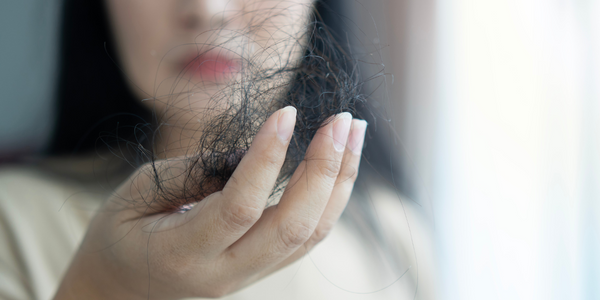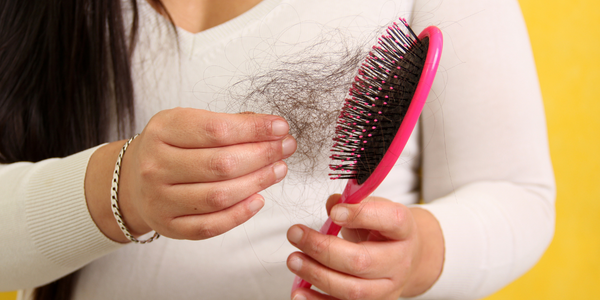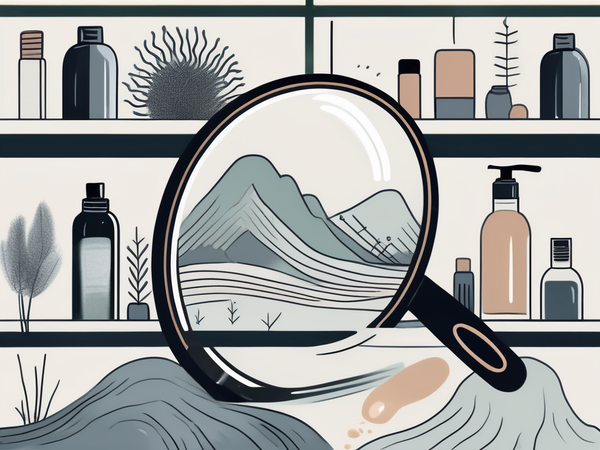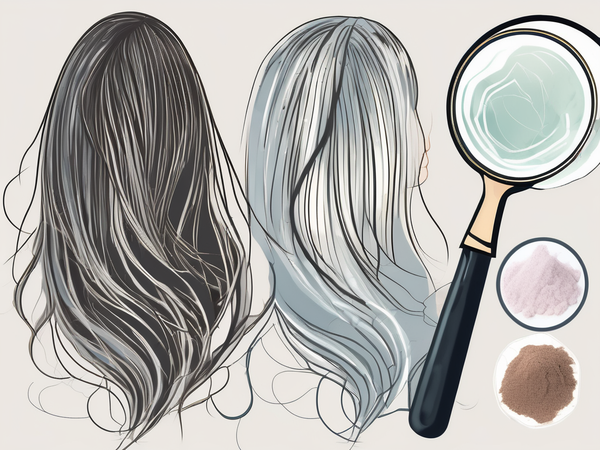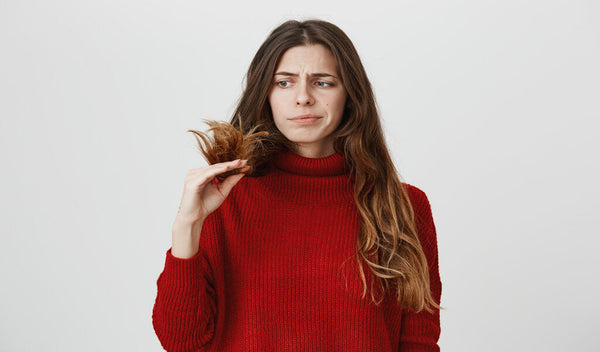In the pursuit of achieving the perfect appearance, there's nothing quite like the confidence boost that comes from a great hair day. Our locks are a vital part of our overall aesthetic, and for many, they hold the power to shape our confidence. Thus, it's no exaggeration to say that the issue of hair fall or hair loss strikes a deep chord with countless individuals. Some might even argue that the pain of losing hair surpasses the anguish of a romantic breakup.
If you find yourself among those who've explored an array of solutions, from costly salon treatments to DIY hair masks, in a desperate bid to combat hair fall without success, then this blog is just for you.
While "hair fall" and "hair loss" might seem interchangeable, they are two distinct issues. In this article, we aim to clarify the difference between these terms and provide valuable guidance on how to control hairfall and hair loss effectively.
The Hair Growth Cycle
Hair develops from the follicle, or root, under the skin of the scalp. Blood vessels around the follicle's base "feed" the strand, giving it the nutrients it needs to develop. The "hair growth cycle" is the process through which each strand grows, rests, and sheds. Anagen, catagen, telogen, and exogen are the four phases of this hair development cycle.
-
Anagen-Growth Phase:
This stage is characterized by rapid hair growth. It could be for two to seven years. -
Catagen-Transition Phase:
The hair stops growing and is cut off from the follicle at this stage. About 10 days may pass during this time. -
Telogen-Resting Phase:
The strands rest for two to three months during this period. During this stage, strands do not typically develop but also do not typically fall out.
-
Exogen-Shedding Phase:
The end stage of a hair growth cycle, where the hair strand is cut loose. It lasts between two and five months and is a prolongation of the telogen phase.
Understanding Hairfall
A daily hair loss of 50 to 100 strands is typical. However, if you are losing a lot more hair each day, you could have a condition called "Telogen Effluvium, a transient hair loss problem that often resolves on its own. When many hair follicles on the scalp reach the resting phase but do not start the subsequent growth phase, telogen effluvium starts to occur. By identifying the causes and addressing them, telogen effluvium (excessive hair loss) might be reversed, causing the hair to return to normal, and regrowth can start in 3–8 months. Causes of hairfall could include:
- Drastic weight loss
- Post childbirth
- Emotional stress
- High fever
- Recovering from illness
- Stopping birth control pills
- Seasonal shedding
Understanding Hair Loss
Hair loss develops when hair development is inhibited. "Anagen Effluvium" is the name given to this condition. This condition develops while the hair growth cycle is in the anagen (growth) phase. The hair does not regrow after hair loss until the underlying reason is addressed. An example of "Anagen Effluvium" is hair loss caused by chemotherapy. Due to inherited diseases like androgenetic hair loss, you may notice spotty or bald areas (alopecia), abrupt hair thinning, full-body hair loss, or a receding hairline if you have hair loss. The pattern of hair loss in men and women may also differ from one another. After adolescence, male hair loss starts. Typically beginning above the temples, it wraps around the top and sides of the head, leaving a ring of hair at the bottom of the scalp. Hair loss could take place because of:
- Hereditary
- Autoimmune conditions
- Certain medications or treatments
- Harsh chemicals used in hair care products
- Hairstyling causes a pull on the hair
Nutrition for healthy hair
What you eat has a direct impact on your hair's health and growth. Whether you have hairfall or hair loss, to achieve healthy hair, focus on consuming the right vitamins for hair. Vitamins and minerals can stimulate follicles and promote new strands. Let’s look at some key vitamins for hair growth:
Vitamin C
Vitamin C is a vital contributor to the growth of healthy hair. Its role lies in enhancing blood circulation to the hair follicles, thereby facilitating the delivery of an increased supply of oxygen and essential nutrients. Moreover, vitamin C aids in the absorption of iron, a mineral of utmost importance in maintaining optimal hair health. For a reliable source of this essential vitamin, one can turn to a variety of foods, including citrus fruits, bell peppers, broccoli, kale, strawberries, and tomatoes.
Biotin
Also known as vitamin B7, biotin helps produce keratin, a key structural component of hair. It may help reduce hair loss and stimulate new growth. Good sources of biotin include salmon, avocados, sweet potatoes, almonds, and eggs.
Vitamin E
A powerful antioxidant, vitamin E helps support hair follicle cells and may minimize damage from free radicals. Look for tocopherol forms of vitamin E in foods like spinach, broccoli, almonds, and sweet potatoes.
Iron
Iron carries oxygen to hair follicles and promotes growth. Low iron levels can lead to hair loss. Eat more red meat, poultry, seafood, beans, dark green leafy vegetables, and fortified cereals.
Zinc
Important for hair tissue growth and repair, zinc deficiencies can cause hair loss and slow regrowth. Oysters, beef, pumpkin seeds, cashews, and chickpeas are excellent sources of zinc.
Focusing on a balanced diet with these key nutrients will nourish hair from the inside out and promote lush, healthy locks. Supplements may also help address any deficiencies or support healthy hair growth from the inside, especially the ones that focus on providing all essential nutrients in one single product. Some of these supplements are now available in thin oral strips that melt in your mouth effortlessly while on the go.
Additional Tips to Control Hairfall and Hair Loss
- Reduce mental stress.
- Limit heat-based techniques for styling your hair.
- Massage your scalp regularly for better blood flow to the scalp.
- Use mild and chemical-free (paraben-free) shampoos.
Wrapping Up
Getting educated about the root cause of your hairfall can help you tackle the situation better. Much like our skin, our hair needs the right nourishment from within along with external care. Educating yourself on the difference between hairfall and hair loss and how the right nutrition can help you achieve healthy hair.
References
https://www.aad.org/public/diseases/hair-loss/insider/shedding
https://www.aad.org/public/diseases/hair-loss/treatment/tips







